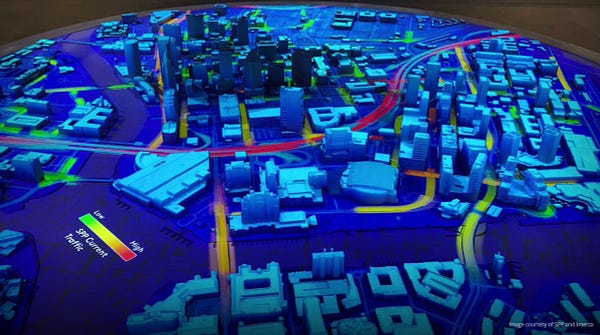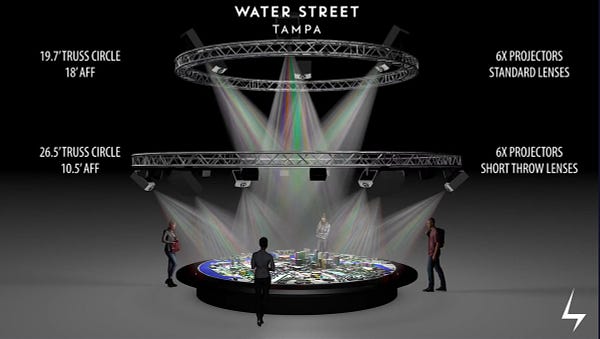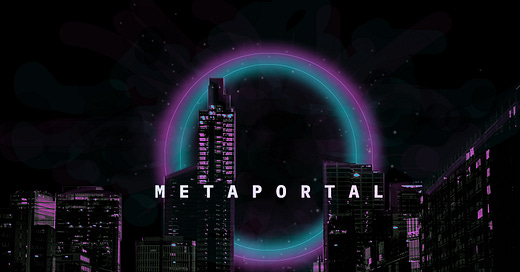The 'Metaverse Primer' recap by MetaPortal - Part V
This post is brought to you by…
NFTfi allows borrowers to put up assets for a loan and lenders to make offers in exchange for interest. The NFT is held in escrow so lenders know for sure that they will either get their money back with interest, or receive the NFT in exchange.
Alexa, define: Virtual Platform
It’s important to define what is meant by virtual platforms as they form the basis of the article. Never one to shy from detailed explanations, Matthew describes them as:
“The development and operation of immersive digital and often three-dimensional simulations, environments, and worlds wherein users and businesses can explore, create, socialize, and participate in a wide variety of experiences (e.g. race a car, paint a painting, attend a class, listen to music), and engage in economic activity. These businesses are differentiated from traditional online experiences and multiplayer video games by the existence of a large ecosystem of developers and content creators which generate the majority of content on and/or collect the majority of revenues built on top of the underlying platform.”
So it’s these virtual platforms that citizens of the Metaverse will interact with. They will be accessed by the hardware we covered in a previous article , and will provide environments for us to socialise, do business and be entertained.
All of today’s leading virtual platforms originated from games, mainly due to the fact games are built to be fun, and as such have retained a large number of users. The most popular of these are Roblox and Minecraft. They have however remained as virtual platforms, rather than expanding to fully fledged metaverses. This is because it’s extremely difficult to make something for such a large market that also requires huge amounts of computing power.
Here, Matthew revisits the definition of what a virtual platform is, summarising that virtual platforms are not virtual worlds, but a subset of them. He goes on to back this up with quotes from others. According to Bill Gates (as told by Chamath Palihapitiya), a “platform is when the economic value of everybody that uses it, exceeds the value of the company that creates it.” Tim Sweeney argues “something is a platform when the majority of content people spend time with is created by others.”
Our definition at MetaPortal is “platforms provide structures or tooling that are used as a base upon which other applications, processes or technologies are developed, using the same technical framework.” More to come on this in the next few weeks.
So virtual worlds, regardless of what they look like, will connect to the wider metaverse, but are not metaverses in and of themselves. “Instead, they’re more like the Metaverse version of an app or website.” Makes sense.
A Metaverse platform on the other hand must have the ability for creation, services to support it, and operate a multifaceted economy. It is a substantially more complex proposition (for all the reasons we’ve covered so far on networking, hardware and compute) than a virtual platform.
Going beyond games
Matthew points out that there are already other types of platforms popping up. Snap is using augmented reality (AR) and location tracking to build an Metaverse platform that uses their avatar system. Since the article was written we’ve seen Meta (previously Facebook) come out with similar plans for an all encompassing platform. Perhaps the coolest example though is one I’d not heard of, Nvidia’s Omniverse.
Omniverse allows businesses to bring together digital assets regardless of their file format or the engine used to create them, within a single environment. As simulation tools become more ubiquitous, Matthew predicts examples where Omniverse could tie together complex plans that include architecture, traffic management and emergency simulation, all in one.





Switching over to blockchain based virtual platforms, Decentraland, Sandbox and Cryptovoxels all get a mention.The article rightfully points out that the power of these platforms is in decentralisation. They offer players ownership of their in-game assets and in some cases governance over the platform itself. Imagine how many people play Candy Crush Saga or Farmville without being able to reap the monetary rewards from their grind.
Whether blockchain based or not, the diversity of platforms we see today suggests there will be a multitude of virtual platforms to choose from in future. By the numbers:
Minecraft went from 25m monthly active users (MAUs) in 2014, to >125m today
Roblox went from 2.5m MAUs to >200m
Fortnite >70m
GTA Online > 50m
It’s mentioned multiple times in the post that these platforms can form, and subsequently benefit from, virtuous loops. This effect will only be supercharged for crypto-native virtual platforms as users can earn real money interacting with and creating on them. We’ve seen that well designed token incentives can be a huge boost for user motivation.
Conclusion
To pull the article together, there are a couple of different analogies that say the same thing.
“In the same way Facebook isn’t the internet, the Metaverse will not be a singular virtual platform.”
And from Tim Sweeney:
“Just as every company a few decades ago created a webpage, and then at some point every company created a Facebook page, I think we’re approaching the point where every company will have a real-time live 3D presence, through partnerships with game companies or through games like Fortnite and Minecraft and Roblox.”
Creating a Metaverse platform is a huge undertaking due to the computing requirements, but we are already seeing the transformation of gaming platforms into limited versions of the same thing. The future will be multi-platform for sure, a Metaverse made up of multiple access points and virtual environments emerging from the efforts we see taking shape today.





